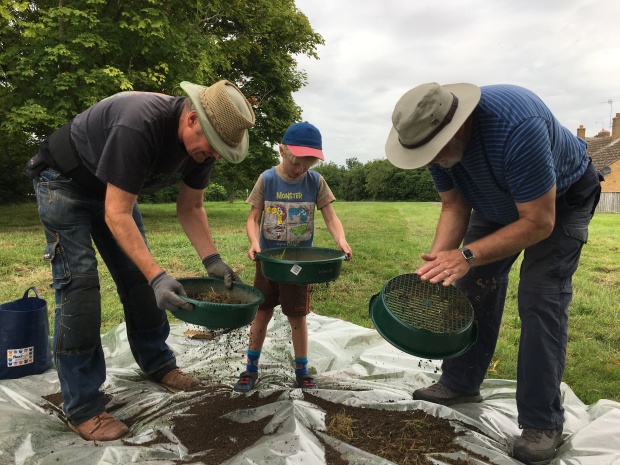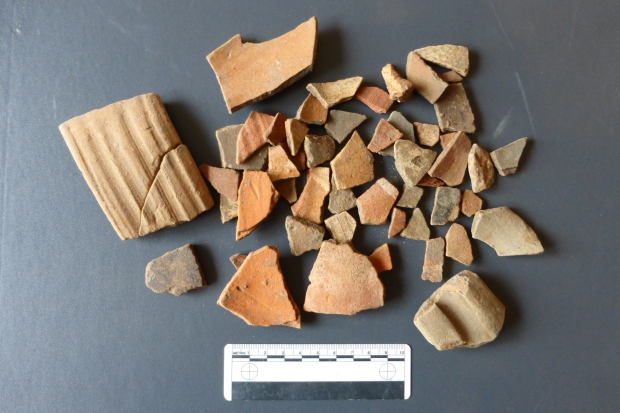Our second test-pit was dug immediately east of Test-pit 1 in an area of open ground owned by South Cambs District Council (situated between Nos. 27 and 33 Streetly End), on the south side of the hamlet. The area comprises rough grassland and trees and had several discreet earthworks of unknown origin. The test pit was also located close to a find spot of medieval pottery in the adjacent field to the south.

Hard at work at Test-Pit 2, looking for medieval pot.
Excavation removed 50cm of soil to reveal natural clay at the base of the pit. Archaeology comprised 10cm of turf covering 10cm of topsoil and 30cm of chalk-rich subsoil. No features were recorded in the pit.
Unbelievably, finds from this pit were exclusively medieval in date, and included pot, animal bone and oyster shell. The pot assemblage comprised 125 sherds of medieval pottery, mainly sandy wares with some shelly wares, all most likely dating to the 12th and 13th century. Much of the pottery was small and abraded but there were larger sherds in the assemblage too, including pot rims and jug handles. Other finds included three handmade iron nails.

Some of the medieval pottery found in Test-Pit 2.
The high concentration of medieval finds from this pit is incredible and is unlikely to have solely come from the medieval practice of manuring the fields with domestic refuse. Overall, the find assemblage is characteristic of a medieval midden, but whether this is a communal refuse dump for the hamlet, situated away from the edge of the settlement, or evidence of occupation in the more immediate vicinity at present remains unclear. A new objective for Dig 5 perhaps…
